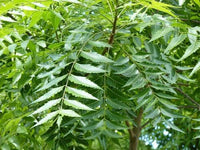The Water Cycle: Nature's Vital Circulation System
Water, the lifeblood of our planet, moves through an intricate and fascinating process known as the water cycle. Also referred to as the hydrologic cycle, this natural phenomenon illustrates how water constantly circulates through various forms and states, shaping the Earth's landscapes and sustaining all life. In this article, we delve into the captivating journey of water through the water cycle, showcasing the beauty and importance of this dynamic process.
Evaporation: The Rise of Water Vapour
The water cycle begins
with the sun's energy warming water bodies such as oceans, rivers, and lakes.
This heat causes water molecules to gain enough energy to break free from their
liquid state and transform into water vapour, a gaseous form. This process,
known as evaporation, is a pivotal step in the water cycle as it transports
water from the Earth's surface into the atmosphere.
Condensation: Formation of Clouds
As the warm water vapour
rises into the atmosphere, it encounters cooler temperatures at higher
altitudes. This causes the vapour to lose heat energy and condense back into
tiny water droplets or ice crystals. These clusters of water droplets form
clouds, which serve as visible indicators of the ongoing water cycle process.
Condensation is not only responsible for cloud formation but also for the
occurrence of fog and dew.
Precipitation: Nature's Aqueous Gift
When the water droplets
within clouds become heavy enough, they fall back to the Earth's surface in the
form of precipitation. Precipitation includes rain, snow, sleet, and hail. This
stage replenishes water sources on land, providing nourishment to plants,
animals, and human populations. Precipitation also contributes to the filling
of rivers, lakes, and aquifers, ensuring a continuous supply of freshwater.
Surface Runoff and Infiltration
Upon reaching the
ground, precipitation has two main paths: surface runoff and infiltration.
Surface runoff occurs when rainwater flows over the land, collecting in
streams, rivers, and eventually making its way back to the oceans.
Infiltration, on the other hand, happens when precipitation seeps into the
soil, replenishing groundwater reserves and contributing to the water stored in
underground aquifers.
Transpiration: The Green Breath of Plants
As water is absorbed by
plants through their roots, it eventually makes its way to the leaves. Through
a process called transpiration, water vapour is released from the leaf surfaces
into the atmosphere. This additional source of water vapour joins the
atmospheric water content, and once again, the cycle continues.
Conclusion
The water cycle, an
extraordinary display of nature's interconnectedness, plays a vital role in
maintaining the delicate balance of life on Earth. Through the processes of
evaporation, condensation, precipitation, and more, water constantly transforms
from liquid to vapour to solid, nourishing ecosystems, shaping landscapes, and
supporting all living organisms. As we marvel at the beauty of the water cycle,
let us also recognize its importance in sustaining our planet and inspire
efforts to preserve and protect this precious resource for generations to come.
This article in Urdu click here.


No comments:
Post a Comment